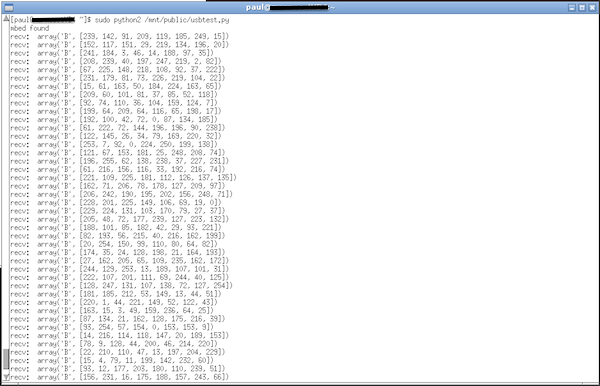
This example demonstrates the use of FX3 as a USB 2.0 single port host. The example supports simple HID mouse class and simple MSC class devices. Cyfxusbotg: CYUSB3014: CYUSB3KIT-001: This example demonstrates the use of FX3 as an OTG device which when connected to a USB host is capable of doing a bulkloop back using DMA AUTO channel. Python USBVCP - 6 examples found. These are the top rated real world Python examples of pyb.USBVCP extracted from open source projects. You can rate examples to help us improve the quality of examples. Aug 06, 2021 Python and Libusb with Linux. Libusb provides user-space access to usb devices, and the PyUSB module provides access through Python. The libusb api can be used in lieu of PyUSB documentation. PyLibUSB seems to be similar but uses ctypes. Together with the libusb api, this is an attractive choice. Jul 21, 2015 It can be used to create a graphical user interface from within Python that can then be used to interact with the PyUSB library and ultimately the USB based embedded system. For example, a button could be added that then sends a USB message to turn on an LED or read sensor data can be developed in a matter of minutes. Let us work on an example to add an item in a queue. To start working with the queue, first import the module queue, as shown in the example below. To add an item, you can make use of put method as shown in the example: import queue q1 = queue.Queue q1.put(10) #this will additem 10 to the queue.
Thanks for all the responses but I forgot to mention that I have very little hardware understanding (at least in english) and the device itself it very simple and only needs about 5V power to be active. The problem here is that I want to control when the device is active using a computer so I thought USB might be a good choice since its simple (but didn't turn out to be). I'm open to any other suggestions on how I might achieve this hardware and software-wise (as in what interface should I use, etc). Also I'm trying to stay away from (complex) micro controllers.Others suggested the parallel port. It is the natural choice for such things, with two caveats: - it is legacy, and thus often not available on modern hardware, especially on mobile ones. So if you want it be prepared to additionally buy a usb2parallel-adapter.
Python Usb.core Example

 to be drawn, and shouldn't break if you try more & fail (albeit, that might be something that isn't true all the time). So you can draw quite a bit of current from it (the stupid USB-cup-warmers are an example of
to be drawn, and shouldn't break if you try more & fail (albeit, that might be something that isn't true all the time). So you can draw quite a bit of current from it (the stupid USB-cup-warmers are an example of